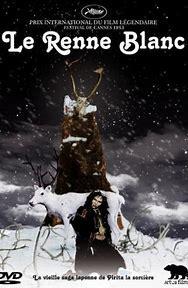 THE WHITE REINDEER (1952) – As Halloween Season nears its end, Balladeer’s Blog takes a look at a fascinating and haunting Finnish horror film. First off, let me assure readers that The White Reindeer is, indeed, a serious movie despite the way that some glib descriptions of it make it sound like just another campy black & white monster movie from long ago.
THE WHITE REINDEER (1952) – As Halloween Season nears its end, Balladeer’s Blog takes a look at a fascinating and haunting Finnish horror film. First off, let me assure readers that The White Reindeer is, indeed, a serious movie despite the way that some glib descriptions of it make it sound like just another campy black & white monster movie from long ago.
Even though the premise – the beautiful daughter of a witch begins turning into a reindeer-monster and killing off townspeople – sounds a bit silly, director Erik Blomberg succeeds at making The White Reindeer a moody, creepy and effective horror film.
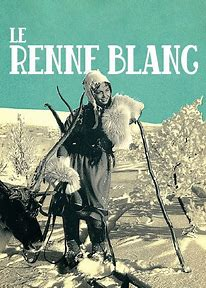 Blomberg’s best move was just accepting the fact that he didn’t have a big enough budget for convincing special effects so he relies on stylish editing, shadows and every camera trick in the book for the transformation scenes.
Blomberg’s best move was just accepting the fact that he didn’t have a big enough budget for convincing special effects so he relies on stylish editing, shadows and every camera trick in the book for the transformation scenes.
The film is based on Sami legends going back centuries and is set in a vaguely defined time period, adding to the odd atmosphere. Rifles are in evidence, but the story’s Lapland location precludes the presence of vehicles of any kind, so the exact decade and century cannot be discerned.
The film opens with the singing of an old folk song from Finland over footage of a lone woman walking the snowscapes of Lapland. The incredibly desolate but incongruously beautiful footage is of a Finnish witch named Maarita who has given birth to a daughter, who will inherit some of her mystic power.
Maarita forces herself onward through the endless snows, trying to keep herself and her newborn child from being preyed upon by the wolves who have begun trailing them. The witch reaches a village of Sami people and gives them her baby to raise, as she at last passes away from physical strain. Neither the Sami nor the daughter, Pirita, are aware of the child’s eldritch heritage.
A jump-cut takes us to Pirita as an adult. She is being played by Mirjami Kuosmanen, wife of the director Erik Blomberg and co-author with him of the screenplay.
Pirita is shown to be something of a rebellious tomboy who races reindeer like the men of the town and indulges in other outdoor activities. Viewers observe the lifestyle of such snowbound villages, where everyone moves around via skis or by “snow canoes” of various sizes that are pulled by trained reindeer.
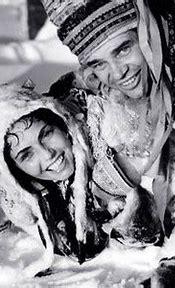 The culture is very reindeer-centric, and when the animals are “hunted” it is not for killing, but to be captured and domesticated. This is a metaphor regarding Pirita’s own short-term fate when the man she is attracted to – Aslak – manages to be the only man around who can outrace and catch her.
The culture is very reindeer-centric, and when the animals are “hunted” it is not for killing, but to be captured and domesticated. This is a metaphor regarding Pirita’s own short-term fate when the man she is attracted to – Aslak – manages to be the only man around who can outrace and catch her.
Having been figuratively “captured”, although willingly, since she does love Aslak, Pirita is sadly “domesticated.” As a married woman, she may no longer run wild with the men and enjoy their outdoor activities. She is to stay at home and prepare for having a family.
In an interesting touch, Pirita’s sex-drive is far greater than Aslak’s and she feels that her needs are not sufficiently satisfied by the way Aslak’s occupation of reindeer-herding keeps him away from their bed for days at a time.
So driven is Pirita by her desire to make her husband spend more time with her that she goes to the local shaman, Tsalkku-Nilla, for a love charm. The shaman performs magic and gives Pirita further instructions to make sure the charm works – she must sacrifice the next living thing she sees to the ancient deity Seita.
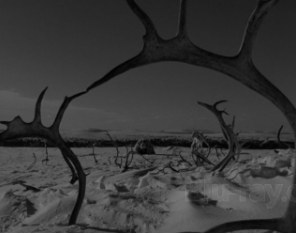 Unfortunately, the next living thing that Pirita sees is the white reindeer which was a wedding gift from her husband, but her sexual frustration drives her to carry out the sacrifice. The remote site for that sacrifice is an eerily rendered reindeer graveyard of sorts, littered with bones and antlers all centered around a crude central column dedicated to the god. This bone-ridden area in the middle of white, snowy nowhere is a very memorable image.
Unfortunately, the next living thing that Pirita sees is the white reindeer which was a wedding gift from her husband, but her sexual frustration drives her to carry out the sacrifice. The remote site for that sacrifice is an eerily rendered reindeer graveyard of sorts, littered with bones and antlers all centered around a crude central column dedicated to the god. This bone-ridden area in the middle of white, snowy nowhere is a very memorable image.
Pirita takes the next step to her own downfall by slicing the white reindeer to death in front of Seita’s column. With the love-spell consummated, Pirita’s husband Aslak can’t resist spending more time with his wife, but the spell has other, unexpected results.
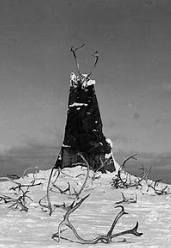 Our main character begins noticing that pretty much ALL men now find her irresistible, which pleases her. On the negative side, during the full moon she begins transforming into a larger than normal white reindeer.
Our main character begins noticing that pretty much ALL men now find her irresistible, which pleases her. On the negative side, during the full moon she begins transforming into a larger than normal white reindeer.
Pirita cannot turn back into human form until after she slays a victim. A lone man from the village has stalked the magnificent white reindeer through the night-darkened snows, and he becomes the first victim of our were-reindeer with overtones of vampirism.
Our leading lady turns back into her beautiful human form, driving the man wild with lust, and he approaches her. She proceeds to kill him, draining his blood from him. This sets the pattern for all of Pirita’s subsequent slayings.
Admittedly, it’s all a bit unwieldy. Why turn back into a human woman before she kills? Was it part of the original legend that the irresistible lady would mate with her hunter before killing him, but prudery prevented that from being included?
And why does she grow fangs and suck blood as part of her m.o.? Did the original legends have her simply kill her victims or feed on some of their flesh? The villagers at first assume it is merely a wild, aggressive reindeer killing people, and it doesn’t seem like that would be the case if they were finding the victims drained of blood.
At any rate, the horror increases from here, complicated by our main character’s fear that the villagers will figure out that she is the monster at large. As Pirita’s body count rises and bullets prove useless against her, the men trying to hunt her reindeer form begin to realize it’s not a normal animal. They realize it’s a witch who assumes the form of a white reindeer and can only be killed by pounding an iron blade into her heart while she is in animal form.
SPOILERS AHEAD!
 Typical of such tales from around the world, we get a tragic finale in which the man who at last succeeds in thrusting an iron spike through the title creature’s heart is her own husband, Aslak. Pirita transforms back into human form upon dying, and Aslak is left horrified and grieving.
Typical of such tales from around the world, we get a tragic finale in which the man who at last succeeds in thrusting an iron spike through the title creature’s heart is her own husband, Aslak. Pirita transforms back into human form upon dying, and Aslak is left horrified and grieving.
The White Reindeer won the Best Fairy Tale Adaptation prize at Cannes the following year. Appropriately, Jean Cocteau himself was part of the jury, and the “fairy tale” designation serves as a reminder of the fundamentally grim nature of such tales before they were “brightened up” for modern children.
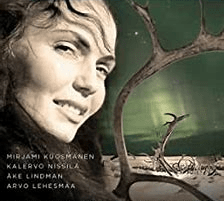 This movie boasts incredible cinematography and the exotic setting helps the storyline seem more unique than it really is. It’s more mature than the Universal Studios horror films of a few decades earlier, but does not feature graphic violence. That being the case, horror fans who want Halloween viewing material that is eerie rather than gory may want to give this film a try.
This movie boasts incredible cinematography and the exotic setting helps the storyline seem more unique than it really is. It’s more mature than the Universal Studios horror films of a few decades earlier, but does not feature graphic violence. That being the case, horror fans who want Halloween viewing material that is eerie rather than gory may want to give this film a try.

Good grief! I’ll have to skip this one.
I understand! Have a great week!
Ah! A love story. Warms the cockles of one’s heart. Call me a sentimental old fool. Okay, call me an old fool. Okay, call me a fool. Seriously, many adaptations of folk lore worth good revisits. A la Threadbare and the Three Princes.
Ha! But I do agree, there was a lot darker material in the original versions of so many of those stories.